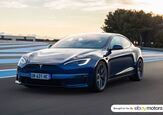#AutomotiveProgress
The Replacement for Displacement: Plotting Our Path Out of the Malaise Era
Around the time of the Bicentennial, 300 horsepower was reserved for from-the-factory supercars and custom builds aimed at the drag strip. Today, you can find family sedans eclipsing that benchmark without a lot of trouble. Compare the first decade of Toyota Corollas to hit North American shores to their modern day equivalents and you’ll note that 0 to 60 time have been almost halved.
It’s the same with most models. A few years ago, I had the privilege of driving a well-maintained 1977 Oldsmobile Omega and wondered how enthusiasm ever survived malaise era automobiles. It must have been the gorgeous styling keeping us going.
Modern cars aren’t just more powerful, they’re also far more efficient and significantly less dirty. Additional safety regulations and standard equipment should have left us with bogged-down fuel hogs, yet automakers have managed to roll with the punches — not just maintaining the status quo but routinely moving it forward. However, to really appreciate just how far we’ve come you need to see those decades of progress plotted.
















Recent Comments